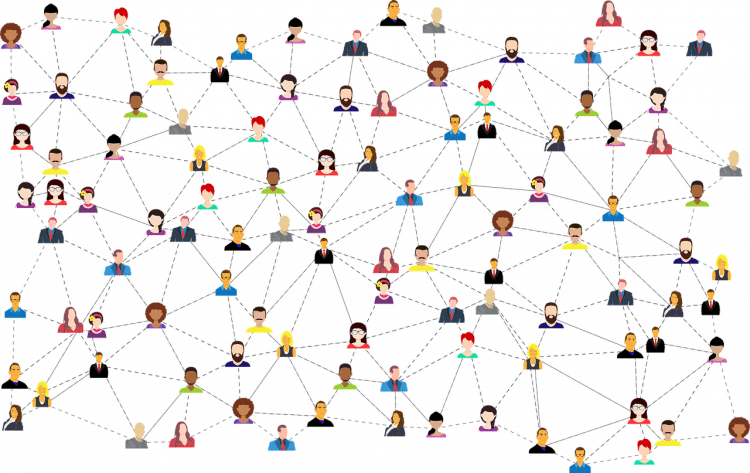 By Jonathan Sclater (Principal, MEd in Imaginative Education, @jonathansclater)
By Jonathan Sclater (Principal, MEd in Imaginative Education, @jonathansclater)
Welcome back to my 4-part series imaginative series on Imaginative Leadership, this is part 2 of 4.
Over the course of this 4-part imaginative series, I will introduce and explain the following attributes I believe necessary to develop one’s Imaginative Mindset: being adaptable, networked, hopeful, and curious. In illustrating the power of these attributes, I ultimately advocate for their power in helping school leaders to rise above uncertainty, address trauma, and bring strength to their communities.
A leader with an imaginative mindset is…
2. NETWORKED
Growing imagination in a context that no one fully understands yet – by being connected to other leaders in order to make meaningful decisions and lead in the moment.
When leaders work with others and tap into their expertise, they grow the capacity to lead with imagination.Our imagination is limited by what we know, and knowledge gained through networks fuels this imagination. Learning in this new online pandemic context then, is not just about the changing practice of individual leaders, but what can be learned through relationship between leaders closely connected within school and district networks, as well as the larger systems.
In times of trauma when people are seeking answers and peace of mind, suddenly everyone on the internet is an expert, so it can be confusing to know who to listen to. Parents also have increased expectations for what we as leaders should be doing in our local school contexts based on what they may have seen or heard via the media or in speaking to other parents. Expectations increase and anxiety can continue to build regarding if we are ‘doing enough’, or maybe ‘too much’, in comparison to what others are seen doing.
 Right now, many educational leaders are leaning into their networks, which helps them to remain strong despite wide-spread misperceptions and public scrutiny. Leaders with an imaginative mindset – a collaborative mindset developed through their network connections – are able to give clear, consistent directions about what teachers should and should not be doing in their planning and instruction. Being networked enables leaders to remain open and flexible to new information that is continually being shared.
Right now, many educational leaders are leaning into their networks, which helps them to remain strong despite wide-spread misperceptions and public scrutiny. Leaders with an imaginative mindset – a collaborative mindset developed through their network connections – are able to give clear, consistent directions about what teachers should and should not be doing in their planning and instruction. Being networked enables leaders to remain open and flexible to new information that is continually being shared.
There is a ripple effect when we are forced to work within new constraints, and this can also easily get overwhelming and make us feel out of control. It is easy to grab on to the next shiny thing that is being promoted over social media or is being immediately implemented in another community. This connection with others offers insight but requires a huge amount of trust. The benefit is that it allows us to take action in our local context and ‘build upon’ meaningful, actionable ideas rather than be ‘dumped on’ with meaningless, distracting advice. Simon Sinek (2009) defines this as,
“The role of the leader is not to come up with all the great ideas. The role of the leader is to create the environment in which great ideas can happen” (p. 99).
Even though we are at a distance physically, leaders still need to sort through all the information and imagine how to promote dialogue and the sharing of ideas, so that this meaningful work can continue and flourish.
Leaders with an imaginative mindset know how to carefully balance and filter where information comes from and how much those in their organizations can absorb. These learning networks also enable them to see beyond local contexts and inform with perspective for what can be accomplished. Leaders with an imaginative mindset grow their imaginative capacities – helping them to take appropriate and meaningful actions which benefit their communities – by staying connected within their networks of leaders.
References
Aspinall, B. (2020). Risk Taker: Strengthen Your Courage, Blaze a New Trail and Ignite
Your Students’ Passions. Self published.
Couros, G. (2015). The Innovator’s Mindset: Empower Learning, Unleash Talent, and Lead a Culture of Creativity. Dave Burgess Consulting, Inc.
Dweck, C. (2006). Mindset: The New Psychology of Success. Ballantine Books.
Egan, K. (2005). An Imaginative Approach to Teaching. Jossey-Bass
Kaser, L., & Halbert, J. (2009). Leadership Mindsets: Innovation and Learning in the Transformation of Schools. Routledge.
Sinek, S. (2009). Start with Why: How Great Leaders Inspire Everyone to Take Action. Penguin.
 Interested in Reading More?
Interested in Reading More?
To read Jonathan’s first instalment in this Imaginative Leadership series, “Leading With An Imaginative Mindset Through A Pandemic: Being Adaptable (Part 1)”, click here.

